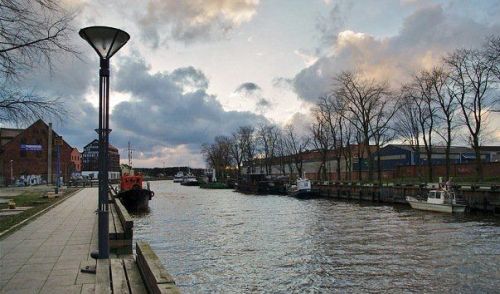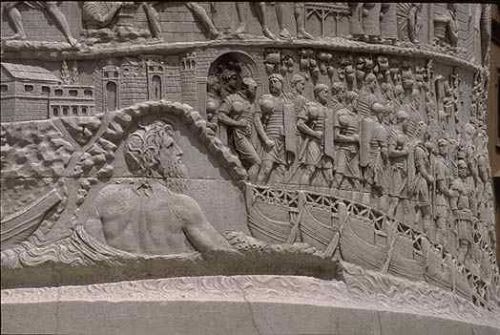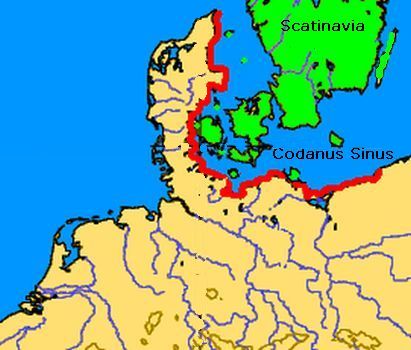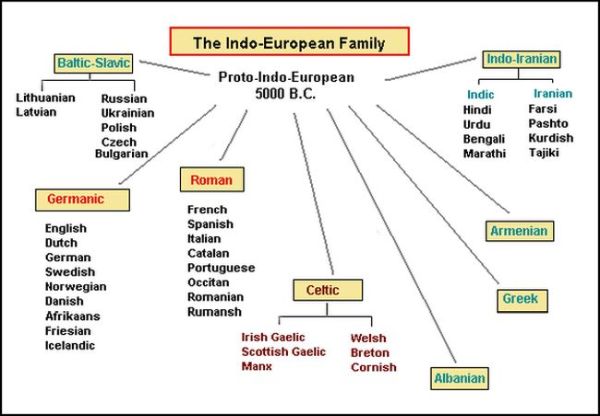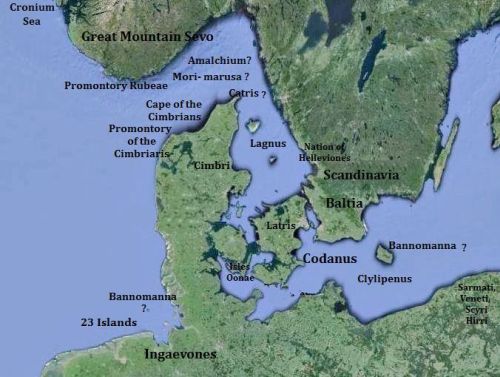
WHEN ENGLAND WAS PART OF A VIKING EMPIRE
EVERY PERSON YOU READ ABOUT IS A CARRUTHERS ANCESTOR, INCLUDING WINSTON CHURCHILL IN THE SOURCES
The Saga of Ragnar Lothbrok refers to London as “the finest city in Scandinavia.” This seems like quite a mistake, considering London is the capital of England and sits on the east coast of Britain. However for the skalds who composed the old saga, London was indeed in Scandinavia, for England was once part of a Viking empire.

This part of English history is almost always glossed over or simply not mentioned at all. The tidier narrative is that Vikings invaded Britain in the 9th century, quickly knocked down most of the Anglo-Saxon kingdoms, but were eventually halted by the founder of England, Alfred the Great. Most history books are silent on what happens after that, before picking up the national story with the Norman Conquest in 1066.
But the whole story is a great deal more complicated. England was indeed a part of a large North Sea Empire founded by Vikings long after Alfred’s death. This does not diminish the accomplishments of Alfred and the English. Instead, the whole story helps us to appreciate how complex the reality of England is. Read on, and it will soon all make more sense.
Back Story: The Great Army, Alfred, and their Legacy
A massive host of Vikings descended upon the kingdoms of Britain around the year 865. According to the sagas, this army was led by the sons of Ragnar Lothbrok, seeking revenge for their father, who had been executed in a pit of vipers. The historical and archaeological records do not commit to the saga narrative. Still, they state the Great Army was made up of Vikings from all over the north, who were suddenly united under tremendously effective leadership, and were remarkably successful.
To make a very long story short, the young ruler of the last Anglo-Saxon kingdom, Alfred of Wessex, stopped the Vikings and forced them into a lasting truce. A border or “DMZ” was marked at the old Roman road, then known as Wattling Street. The Vikings got the northeast of Britain, and the Anglo-Saxons got the southwest.
More waves of Vikings would try their luck at taking the whole of Britain, and Alfred would spend the rest of his days trying to make his enlarged kingdom Viking-proof. His efforts to unify and defend his people earned him the title Alfred the Great.
After Alfred’s death, his son, Edward, and his daughter, Aethelflaed, worked to retake much of the land lost to the Vikings. It would not be until the time of Alfred’s grandson, Aethelstan I, that the Vikings would be decisively defeated. The borders of England were set to more-or-less their current form at the Battle of Brunanburh (937). This is often thought of as the birth of a bona fide English nation.
This is not to say that all the Vikings in England just got up and left. The northeast of Britain had become (and in some ways continues to be) distinctly Danish in character. Though these descendants of Vikings were more prone to farming than raiding, they still retained much of their culture and identity. Viking Sea Kings like Erik Bloodaxe, Sihtric One-eyed, and Olaf the Shoe (Amlaíb Cuarán) often ruled their domains from York. Essentially, the north was still Viking … and English at the same time.
Aethelred the Unready

Aethelstan, the grandson of Alfred and the hero of Brunanburh, only knew two years of peace after that great battle. He died young around 939 and left his newly unified kingdom to his brother. A few successful rulers followed, but a few decades later (978), a young king named Aethelred II came to the throne. Aethelred (or Ethelred) was nowhere near the ruler his predecessors had been and was known even in his own time as Aethelred the Unready (also known as Ethelred II or Aethelred the Un-counseled).
Smelling weakness, the Vikings, Scotts, and Irish again began raiding England. But while King Alfred had been ready to use arms, diplomacy, and Danegeld (bribes) to manage the Vikings, Aethelred only threw money at the problem. Under Aethelred, the English paid vast quantities of silver to the Vikings, but so ineffective was Aethelred’s leadership that he sometimes broke the treaties this silver bought.
In a final act of weakness, Aethelred the Unready ordered a massacre of all the Danes that could be caught, whether they be Viking marauders, traders, or even settlers. This atrocity took place on Saint Brice’s Day, 1002.
Recently, archaeologists have found mass graves in Weymouth and Oxford dated to 975-1025. Each contains the skeletal remains of up to 50 decapitated Vikings. DNA analysis of these remains reveals that the victims were from Scandinavia, Iceland, Russia, and the Baltic. The term “Danes” in English sources, as always, is a catch-all term for Vikings. It is possible that these mass graves date to the Saint Brice’s Day massacre of 1002. If so, it is likely but one of many others that lay undiscovered.
Aethelred’s bad decisions were compounding, though. One of the massacre victims was a woman named Gunnhild, the wife of a Danish chief and the sister of none other than Svein Forkbeard. Of course, Vikings would never ignore such a brazen and cowardly act. The murder of Svein’s own sister made retaliation inevitable.

Svein (Sweyn) Forkbeard
In the mid-tenth century, much of Denmark, Norway, and Sweden, were united by the great king, Harald Bluetooth. Yes, this is the same Harald Bluetooth that Bluetooth technology is named for. However, Harald’s estranged son, Svein Forkbeard, led an open rebellion against his heavy-handed father starting in the late 970s. Harald died or was killed sometime during that civil war. After that, Svein became King of Denmark, though Norway and Sweden had already taken advantage of the instability and went their own way.
Svein Forkbeard was a powerful and charismatic leader who had already proved himself highly skilled in war. Whether to take advantage of England’s disarray, avenge his people’s slaying, or both, Svein launched a series of attacks on England starting in 1004. These culminated in a full-scale invasion of England in 1013.
The Vikings landed in the center and swept north, using the support of the entrenched Danish population there to quickly secure the area. They then turned their attention to the wealthy southwest and the seat of Anglo-Saxon power.
The dramatic conclusion of Svein’s invasion took place in London in the winter of 1013-1014. Svein Forkbeard’s forces assailed an English army supported by Viking mercenaries under Svein’s former ally, Thorkell the Tall. This battle was the likely origin of the children’s nursery rhyme, “London Bridges Falling Down,” for the fortified bridges of London (like Paris before it) were crucial for resisting the Viking longships. And yes, some elements of our collective culture really are that old (and older).
Svein Forkbeard won the day. Aethelred the Unready fled to his wife’s family in Normandy. Svein was crowned king, and for that brief moment, held England and Denmark along with parts of Norway and Sweden. Svein Forkbeard was the most powerful man west of Byzantium. He was no longer just a king … he was an emperor.
But life is uncertain, and this was especially true for the 11th century. Svein only reigned in England for about five weeks before he suddenly died. The English immediately recalled Aethelred the Unready (supporting his revered dynasty more so than the man who had so often failed them). The reinvigorated English drove Svein’s son, Knut (or Canute), back to Denmark.
The Vikings were not so easily scared off from what had been one of their most significant accomplishments, and Knut re-invaded England in 1015. Aethelred also soon died and was replaced by his dynamic son, Edmund Ironside.

Knut the Great
Edmund Ironside was a great warrior, charismatic leader, and heroic king. But fate was not on his side, and he was up against one of the most successful Vikings of all time. Knut scored a decisive victory over Edmund’s English in 1016, and the scion of Alfred died of wounds he sustained in that battle.
For the second time in two years, the crown of a united England was in the hands of a Viking. To underscore his legitimacy and emphasize that he was there to stay, Knut married Aethelred’s widow, Emma of Normandy. This move (bizarre and grim to the modern eye) was a 10th-11th century convention, with examples from Ireland to Russia. The marriage of Knut to Emma was also to prove fateful. It was partially on the grounds of this union that William the Conqueror would base his claim to the English throne half a century later.
Circumstances continued to favor Knut. Norway and other lands his father Svein had once controlled soon fell under his dominion, mainly through peaceful means. His reign was long (almost 20 years), relatively tranquil, and prosperous. The effectiveness of Knut’s rule was even more evident by the disarray of the rest of western Europe at that time. The death of Brian Boru in Ireland (1014) and the feebleness of the Capetian dynasty in France meant that Knut was almost peerless. As his boundaries extended and his peace continued, he became known as Knut the Great. Knut ruled his North Sea Empire primarily from England through it all, continuously presenting himself as “a true Christian monarch in the European style” (Price, 2020, p. 472). His English and Norwegian subjects probably never loved him. Still, they eagerly accepted the stability he brought and the goodwill he was always eager to display.
The Legacy of Knut the Great
Knut died in 1035. He left several sons, including his successor by Emma, Harthacanute. Unfortunately, Knut’s heirs could not match their father’s political or military ability. As a result, the North Sea Empire quickly fell apart. Nevertheless, the urgency to rebuild it would serve as an impetus for many ambitious men over the following decades. In 1066, both William the Conqueror and Harald Hardrada probably saw themselves as the heir to this tradition of a unified northwestern Europe.
As for Knut’s memory, sources differ dramatically. Almost everything from Knut’s lifetime is favorable (though much of it is deliberate propaganda, perhaps). In England, he was considered a good king, a patron of the Church, a generous and wise man, a lawgiver, and a law follower. We are told Knut even disbanded his Viking bodyguard, entrusting himself to his English subjects.
In Norse sources, such as the Heimskringla, a fuller picture emerges, with Knut displaying cunning, violence, and vindictiveness characteristic of the most ruthless rulers. Later English folk tradition – perhaps embarrassed that their proud nation was dominated by a foreigner – turned on the man altogether. They portray him in ridiculous tales recycled from old stories of Rome’s hated emperor, Caligula. One of these paints Knut as a mad king, standing on the beach and commanding the waves not to roll up on shore.
More often, though, Knut the Great is forgotten entirely – a footnote on the wrong side of history. The legacy of a Viking England exists more in the fine print: for example, in Shakespeare’s Hamlet when the Danish prince is sent to England to “collect our long-neglected tribute.”
As Knut is connected to the foundations for 1066, he is a part of all of England’s remarkable history since that time. Moreover, the legacy of the Vikings in England would prove to be inseparable from the nation itself. Winston Churchill would later remark on the many contributions to England’s laws, legislature, industry, warfare, and its very personality that the Viking settlers would perpetually contribute. He wrote, “the tribulations of [the years] had not reduced the strength of their original character, nor their attachment to the conquered soil. All through English history, this strain plays a gleaming part” (1956, p. 111).
OFFICIAL AND REGISTEREDL CLAN CARRUTHERS CCIS SINCE 1983-CLAN OF OUR ANCESTORS
SCOTTISH CLAN – IRISH CLAN – NORSE CLAN
Preserving Our Past! Recording Our Present! Informing Our Future!
The Ancient and Honorable Carruthers Clan CCIS
CLANCARRUTHERS1@GMAIL.COM

CLAN CARRUTHERS INT SOCIETY CCIS HISTORIAN AND GENEALOGIST

You can find us on our main facebook pages at :
SILVER WINGS-https://www.facebook.com/CarruthersClanLLC/
GOLD WINGS – https://www.facebook.com/carrutherscarrothers.pat.9
CLAN CARRUTHERS FAMILY HISTORY – https://www.facebook.com/CarruthersClan
CLAN CARRUTHERS CCIS – https://www.facebook.com/groups/3878691252182714
CLAN CARRUTHERS INT SOCIETY- https://www.facebook.com/groups/394653845137709
CLAN CARRUTHERS – BORDER REIVERS – https://www.facebook.com/groups/434959914239094
Disclaimer Ancient and Honorable Carruthers Clan International Socie
References
- Sir Winston Churchill. A History of the English Speaking Peoples: Book 1, the Birth of Britain. Reprint by Barnes and Noble. USA. 1993.
- Rodgers, D. & Noer, K. Sons of Vikings. KDP. The United States. 2018.
- Price, N. Children of Ash and Elm: A History of the Vikings. Basic Books, New York, 2020.






